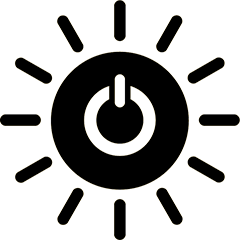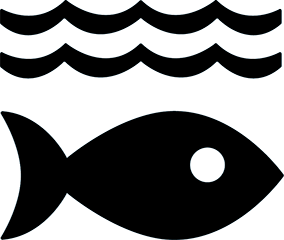UN Sustainable Development Goals Addressed
-

Goal 7: Affordable & Clean Energy
-

Goal 13: Climate Action
-

Goal 14: Life Below Water
-

Goal 15: Life on Land
2020 Global Design Challenge Honorable Mention
This design concept was developed by participants in the Institute’s Global Design Challenge. The descriptions below are from the team’s competition entry materials.
Location: Utrecht, Netherlands
Team members: Michelle vander Vegt, Daan Posthouwer, Filip Opaterny, Jinglun Li, Nicole Pastorelli, Richard Sanders
Innovation Details
Climate change is a complex problem, requiring sustainable, long-term solutions. Inspired by brush turkeys, termite mounds, and social wasps, TheWASPWay is an innovation developed on three levels: product, service and system. This small-scale pyrolyser is designed to convert biomass into biochar at the home level, making carbon storage a possibility for individuals. TheWASPWay platform connects users and creates an e-currency, providing mutual benefits to users and creating TheWASPWay community.
What is the problem you are trying to solve and how is it related to the united nations sustainable development goals?
Human activity has disrupted the natural carbon cycle by releasing large quantities of carbon into the atmosphere. This is widely recognised as a major driver behind anthropogenic climate change. The disruption of climate cycles is detrimental to all mature, well-established ecosystems, which are a priceless library of evolutionarily selected designs and mechanisms. Efforts to reduce our carbon footprint are made at social, governmental and intergovernmental levels and the U.N. Sustainable Development Goal 13 is specifically focused on climate action. Carbon Capture and Storage has been identified as a key way of reducing carbon emissions. Furthermore, we discovered that one way to store carbon is through the pyrolysis of biomass to produce biochar. Compared to other ways of dealing with biomass wastes, such as composting, biochar can store carbon for longer periods. Composting releases carbon captured by back into the atmosphere on the timescale of a year, while biochar can store carbon on timescales of 100’s of years or more. Biochar is resistant to microbial degradation and is a naturally occurring product of wildfires. Why is not pyrolysis a common practice yet? Pyrolysis has a polluting effect on air quality. Multiple countries have already declared a state of climate emergency and, from interviews we conducted, it is clear that climate consciousness is rising while climate action remains low. Calculating one’s individual carbon footprint is available through mobile apps and online calculators. Numerous platforms advise, educate and offer investment in carbon offsetting projects. The problem of climate change is very complex and its consequences too distant from the layperson. Hence, tackling climate change will require not only legislative changes but also the education and participation of individuals. Action at the individual level often lacks immediate results and feels insignificant. People want a straightforward way to reduce their own carbon footprint.
What organisms/natural systems did you learn from and how did what you learned inform your design?
Both our bio-inspiration and innovation develop on three levels: product, service and system. In our product, WASP 1.0, we have emulated the spinning airflow observed in fire whirls, as the starting point to our optimisation of known-pyrolysis mechanisms. To boost the feasibility, in WASP 2.0 we incorporate what we have learnt from shark skin, termite mounds, DNA supercoiling, counter-current flow in animals and the brush turkey so that our product generates and utilises super-coiled, hot, air currents. Together, these combine in very efficient combustion of gases and heat-trapping to generate biochar from biomass waste. At a service level, we couple supply of biomass waste to carbon footprint reduction. We aim to develop a platform, through which we link carbon supply to an e-currency. The e-currency will be earned based on the amount of carbon stored through our product. This e-currency can be used for services accessible through the platform; one service being the reduction of your carbon footprint by destroying the e-currency. The accounting will be recorded on a blockchain to ensure transparency and avoid corruption. By using patterns observed in reward pathways, energy conversion, herd behaviour, and mussel spatial organisation for the development of this nature-guided strategy, we will ensure a transition into an economic ecosystem, in which waste has value. At a system level, the innovation is inspired by swarm intelligence, a natural system in which every individual contributes to a bigger aim, which, for us, is reducing carbon emissions. The combined result is the development of a novel carbon sink. Unlike eusocial insects, some social wasps show individualistic foraging behaviours, much like some humans. With our innovation, we hope to make tackling global problems a natural outcome of our bio-inspirations at service and system levels, by bringing the action to the individual.
What does your design solution do? How does it address the problem or opportunity you selected?
By making carbon storage a possibility for each individual, our design directly tackles the U.N. SDG-13 regarding climate action. Currently, climate action is coordinated at an (inter-)governmental level. We cannot rely on changing governments to uphold promises made by past administrations. Our nature-guided strategy ensures repetition of climate active behaviour. Overall, with our innovation at three levels, we rely on positive feedback loops to have the desired large scale impact on global carbon emissions. We will initiate this movement through a pilot in Utrecht. We believe that through our nature guided strategy we will breed collective responsibility, and TheWASPWay will spread. Climate change cannot be reduced to a carbon cycle that is out of equilibrium and is a complex problem which intertwines copious causes and effects with natural cycles. Reduction of CO2 emissions has multiple effects. If our concept reaches its intended impacts on atmospheric CO2, ocean acidification should decrease, life underwater will benefit, and this is addressed by the U.N. SDG-14. The intended use of pyrolysed biomass is biochar, catered to improve soil quality and yield. This has the potential to tackle the U.N. SDG-15 and SDG-2: halting and reversing soil degradation to promote sustainable agriculture and improved nutrition. In fact, biochar has been shown to increase agriculture yields up to 25%. Alternatively, biochar as a cooking fuel could provide affordable energy to some of the 3 billion people referred to in the U.N. SDG-7. Here, the carbon storage properties would be lost, however, community-based e-currencies could boost local economies and quality of life. In the end, we are giving people ways to take climate action. Not only we have developed a way of incentivising people to repurpose biomass waste, but our concept can also be adapted for other waste streams.


